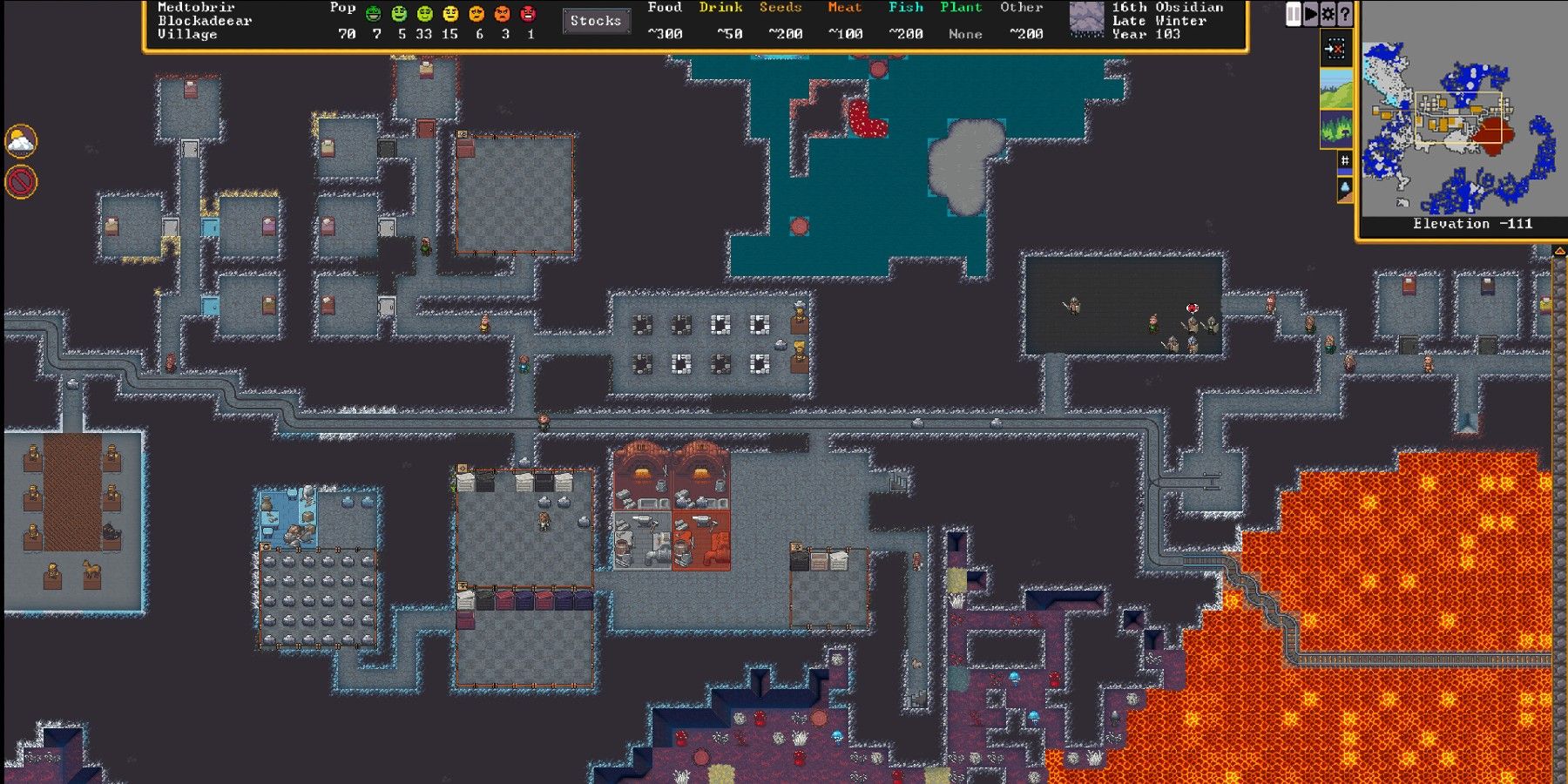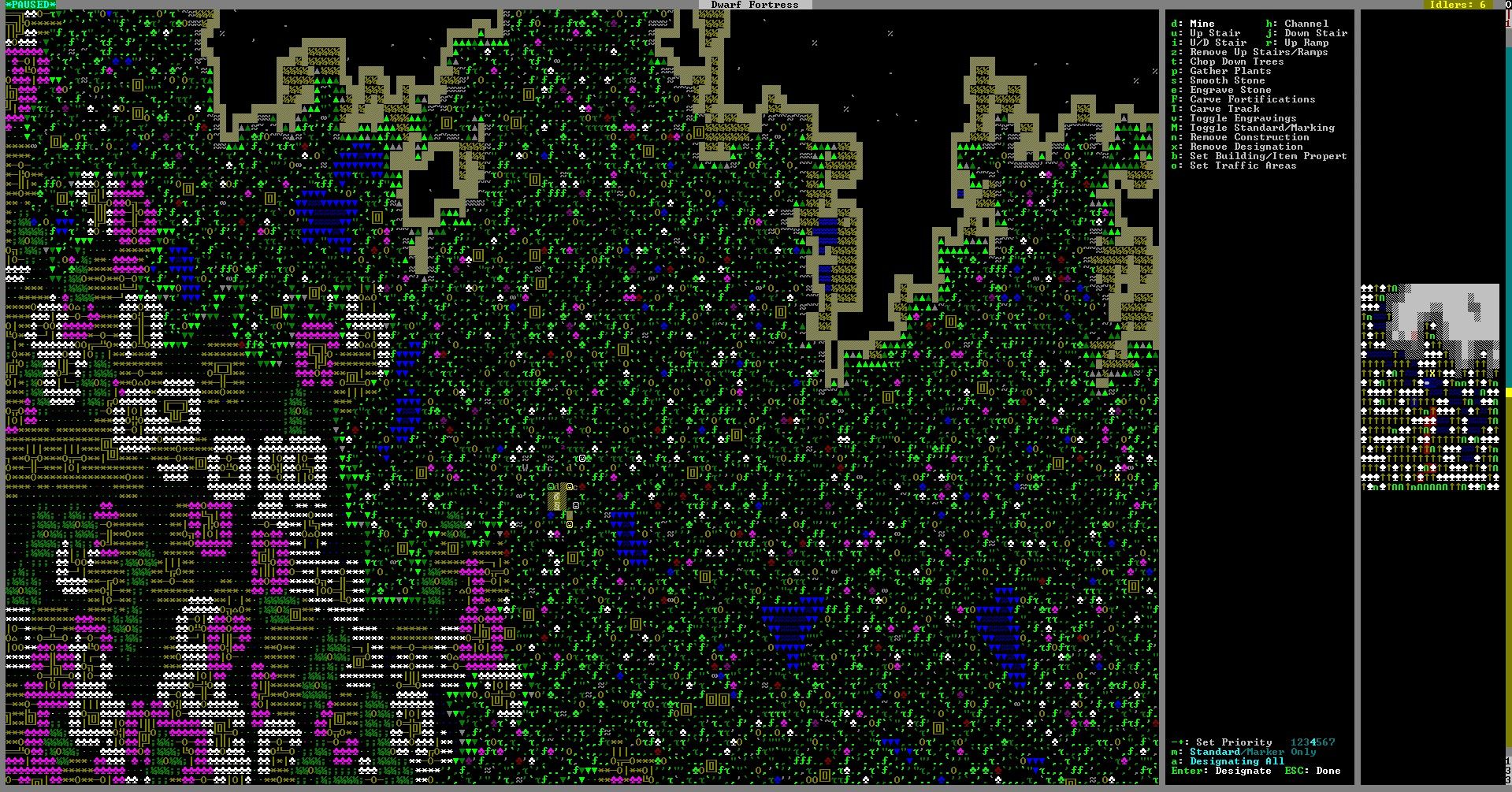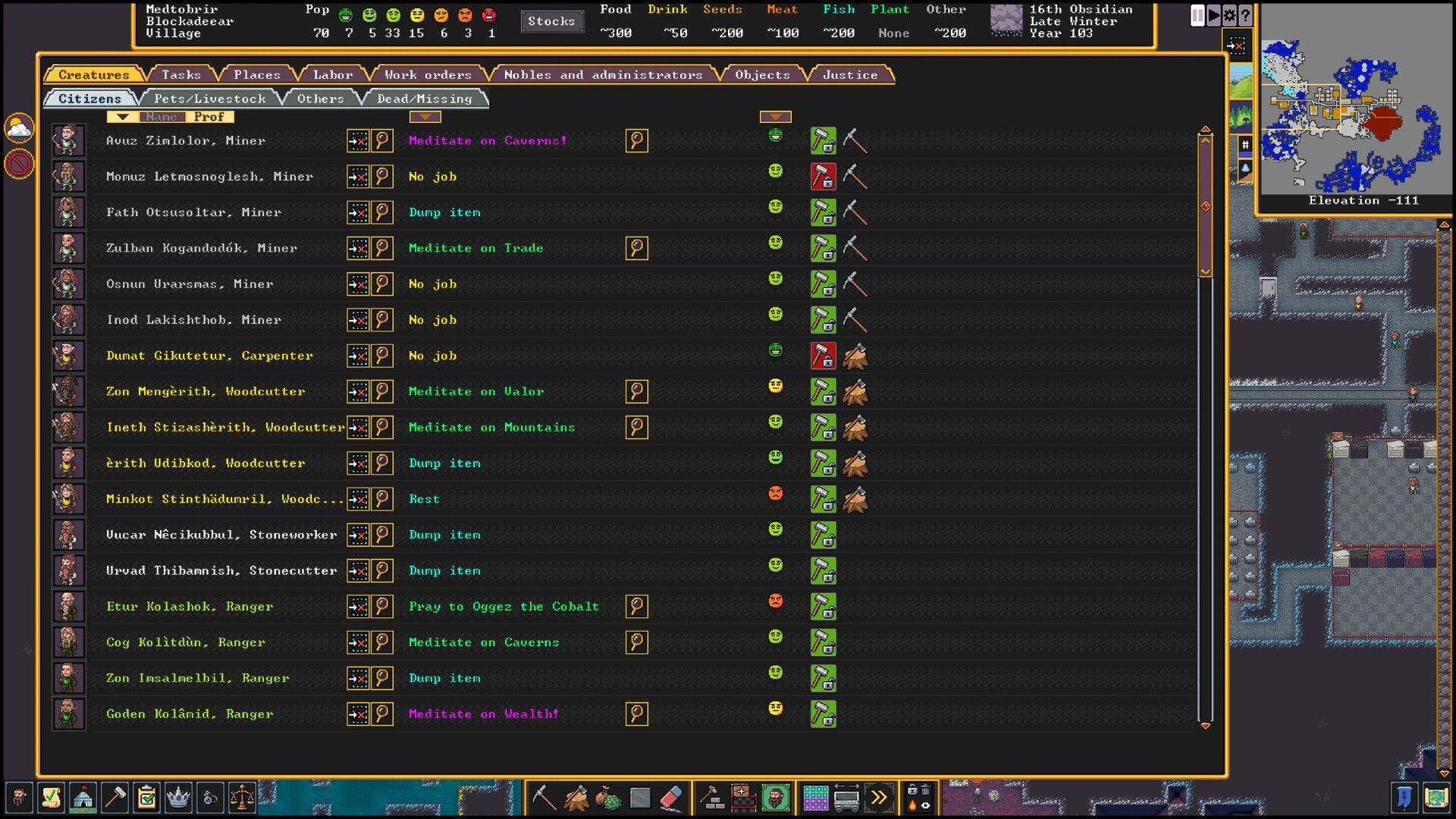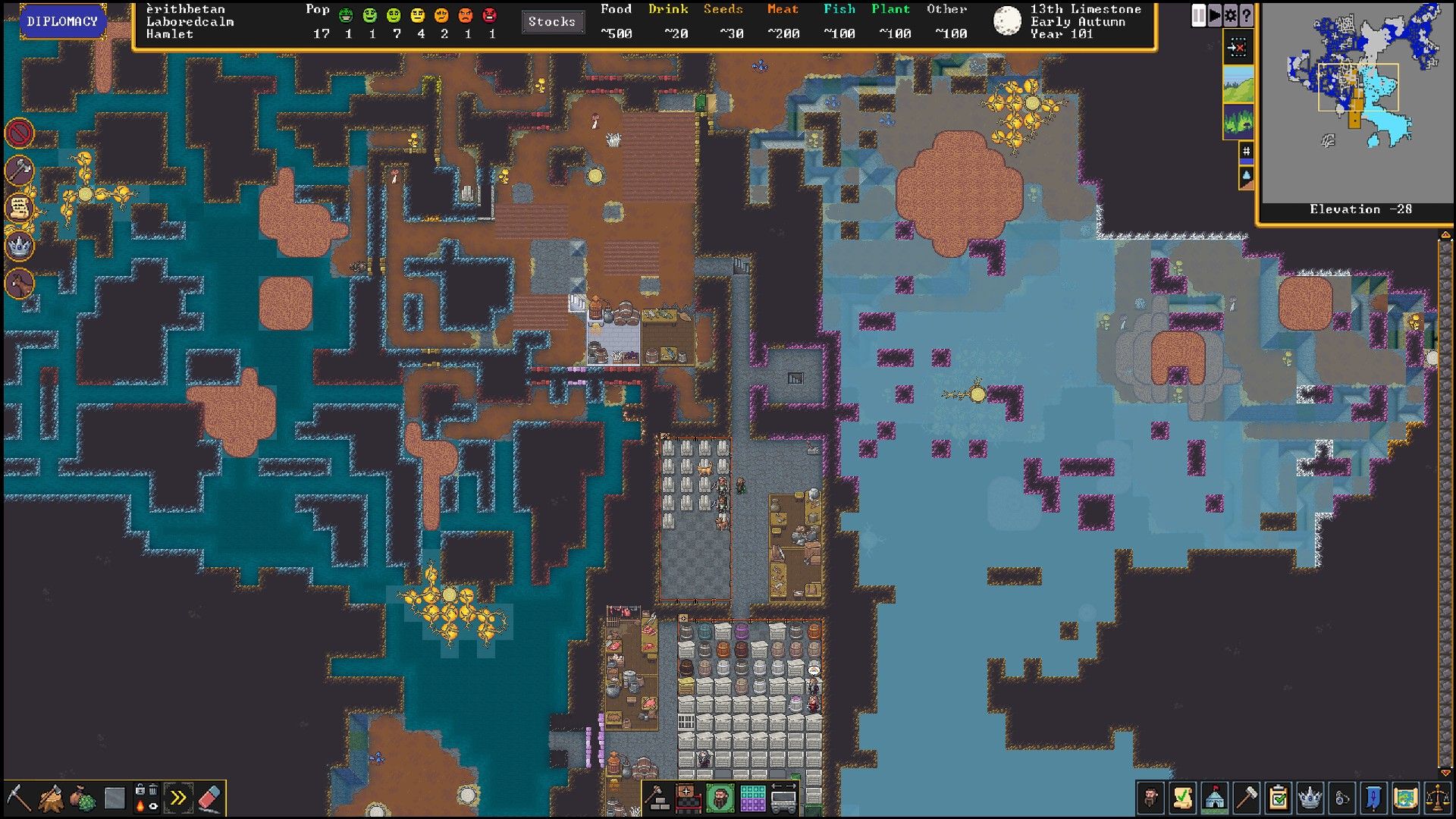Bay 12 Games officially released Dwarf Fortress in 2006. The iPhone hadn't yet released, Facebook was mostly used by college students, and Netflix primarily rented DVDs. However, brothers Tarn and Zach Adams - the masterminds behind Bay 12 - had been creating adventures for much longer. The upcoming Steam release of Dwarf Fortress has been brewing for longer than one might think.
From a young age, the brothers learned how to program from their father, which sparked a life-long interest in creating virtual worlds. In the 80s, they were enamored by text-based games like Nethack, Angband, and Ancient Domains of Mystery, which had vast fantastical worlds with nearly endless possibilities through very simple graphics. Game Rant talked to Zach and Tarn about their game development journey and how Dwarf Fortress, which is now recognized in the Museum of Modern Art, came to be.
Dwarf Fortress Builds From Early Gaming Memories
Tarn and Zach were always interested in games and game development, as their father taught them to program in BASIC two decades before Dwarf Fortress came out - while the brothers were learning to read. In the beginning, they were just making something move on the screen, but quickly they became interested in building games. The tools were not all available online then, but game development was already picking up thanks to the release of affordable personal computers like the massively popular Commodore 64. The Adams family owned a Tandy TRS-80.
"Our parents spoiled us and bought us practically every game that ever came out to PC."
Bay 12 Games was far on the horizon, but the brothers had been developing games with no plans to put them up for nearly two decades. They had some serious efforts during those years, but at the start of the new millennium, Tarn and Zach launched an official website. Now they had an outlet for their innovations, and the first release was an ambitious 3D RPG called Slaves to Armok: God of Blood; a predecessor of the free-to-play Dwarf Fortress.
Bit 12 Detoured Into 3D Before Dwarf Fortress
Slaves to Armok: God of Blood was somewhat out-of-character for developers who dedicated their lives to 2D and text-based games, and they quickly turned their focus back on 2D with several releases in the years to follow. At the same time, they were working on a project dubbed "Mutant Miner." In the game, players controlled a creature that dug its way vertically downward in Dig Dug fashion to absorb mutagen canisters and gain more mutated limbs, thus digging faster.
Within a three-day period of intense back-and-forth between Zach and Tarn, the game shifted. The brothers don't remember exactly what happened, but their mutant became a dwarf, and the tunnels underground a fortress. The development of this game started around the same time as Slaves to Armok: God of Blood released, and perhaps that sparked them to turn this simple arcade game into an indie RPG. After reworking the concept, it seemed like an amalgamation of their previous experiences and expertise in world creation.
At first, Dwarf Fortress was supposed to take a couple of months, as they wanted it released by December 2002. However, it ended up taking four years, during which time it evolved into a completely different beast with complex simulations and a difficulty curve not many other games can compare with. But the work was not finished there.
The Release of Dwarf Fortress Was Just the Beginning
The two managed to focus on Dwarf Fortress full-time not long after, with the world and its simulation growing in new directions. The two understood what they wanted out of the game, as while their modern game interests were different - perhaps complementing each other - Dwarf Fortress had a singular focus.
Tarn and Zach created one of the world's most complex simulation titles, yet graphically it was one of the simplest games around. The world was vast, but its graphics engine used ASCII characters, like in the games they loved 20 years prior. The detour to 3D games convinced them they should stick with what they knew, and focused their efforts on developing the pillars of a good simulation game: the engine.
"It's hard to wrap your head around, and we just keep on going. It's really cool whenever you see Minecraft, The Sims, and there's the base-building genre."
Dwarf Fortress kept growing bigger and better in the years to come, garnering recognition by gamers and developers alike. If it didn't invent a new base-building genre, it certainly inspired titles like Minecraft, RimWorld, and more. Now, 20 years after the development started, the development team has teamed up with publisher Kitfox, musicians, and visual artists to bring Dwarf Fortress to an even wider audience on Steam utilizing new graphical UI, tutorials and guides, a fresh soundscape, and more. Fans and newcomers alike won't have to wait long to see this refresh in action.
Dwarf Fortress releases on Steam on December 6.




